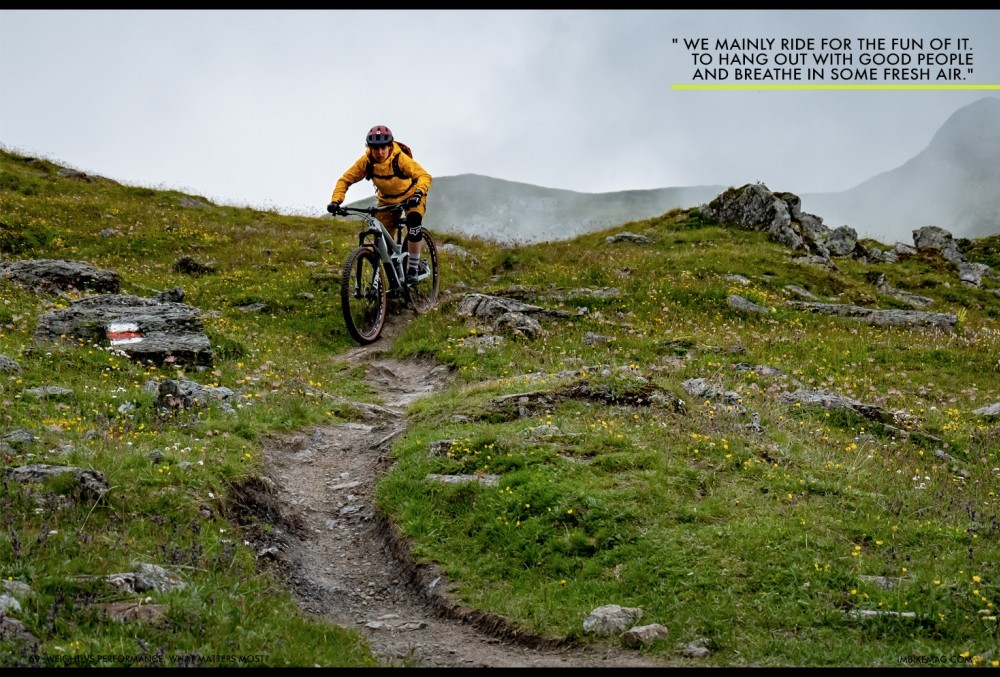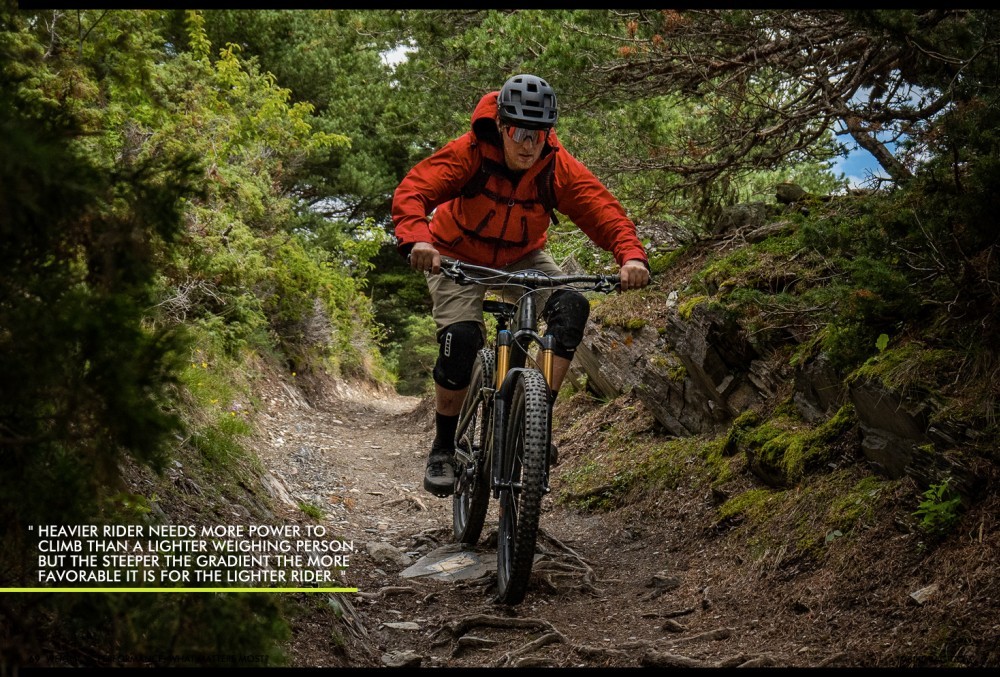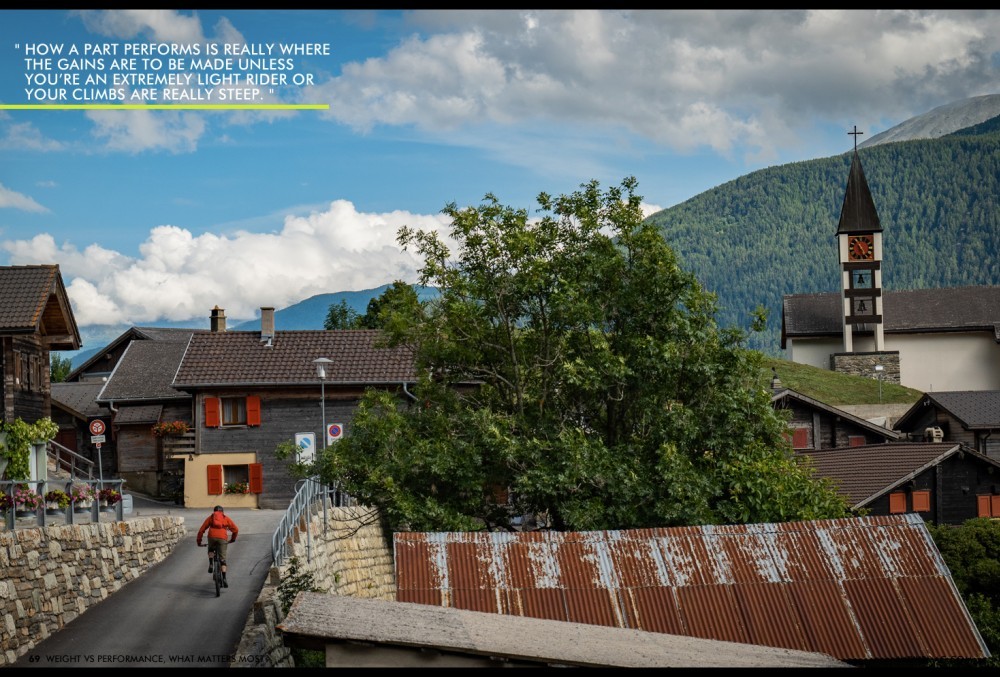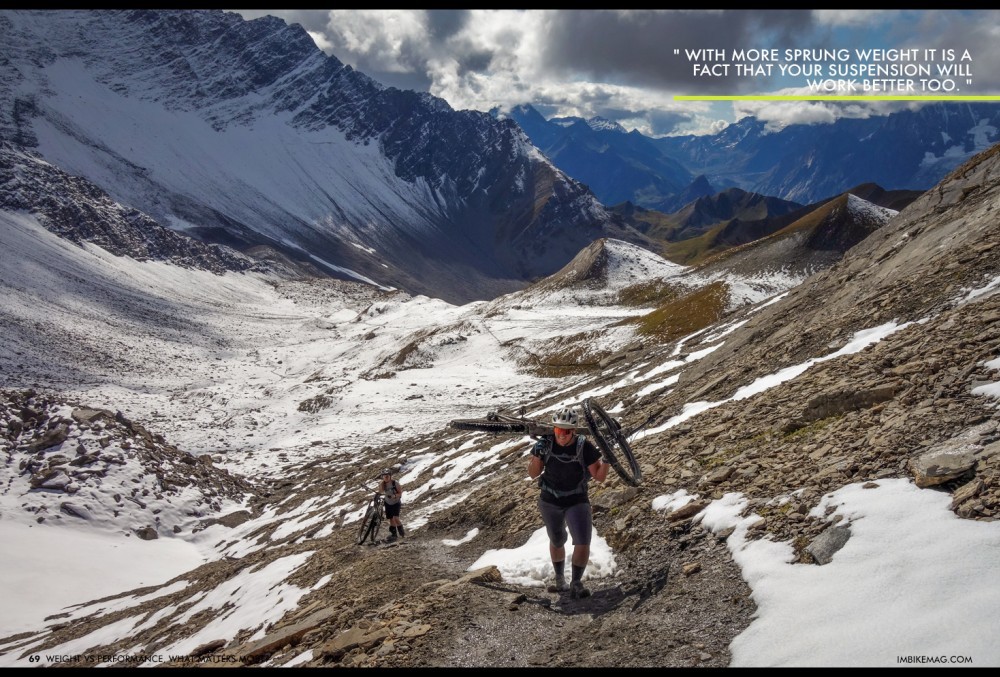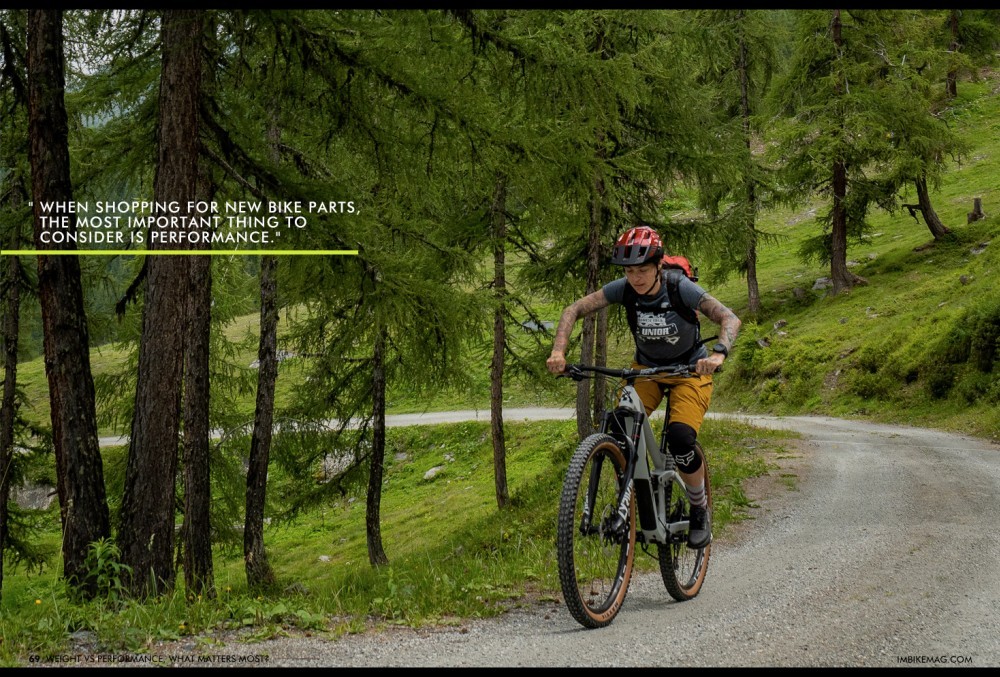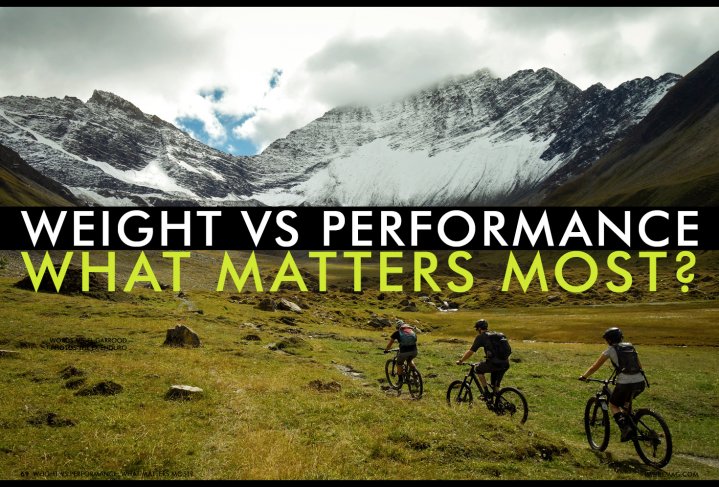
Weight vs Performance, What matters most?
Issue 69 / Tue 29th Mar, 2022
Lighter is better. At least that's the assumption. Does it matter? Mike took a deep dive into the world of grams, watts and seconds.
For years we have spent pouring our hard earned money into lighter bits for our bikes. Less has always been more and when Keith Bontrager said “strong, light, cheap - pick two” we all had the feeling he had a point. Still, does weight matter as much as we have been taught to think?
Aerospace and Formula 1 technologies have helped the bike industry push the boundaries of the possible, resulting in 6,5 kg hardtails and sub 9kg full suspension bikes. Racers are at the pinnacle of all this weight weenie-ism and rightfully so. If you’re spending 30+ hours in the saddle, count your calories and only drink beer in November you are part of the elite that puts race results over basically anything else in life.
Most of us however have normal jobs. We eat too often, not as healthy as we would like and would never consider skipping the after ride pint in the pub. We don’t race and if we do, it’s highly unlikely we end up in the top 20. And that's perfectly fine too.
We mainly ride for the fun of it. To hang out with good people and breathe in some fresh air. To feel some adrenaline flowing through our bodies or maybe just to be able to focus on the trail instead of all the other clutter. Let’s be honest, who worries about careers, house payments or politics when you’re hollering down a ribbon of singletrack at 35 kilometers an hour?
For years I have been in awe on how many brands focus on weight, racing and the image that comes with it. Big race teams, sponsored pro riders, all the advertising aimed at winning and being the best, while most of the people actually using the equipment can’t be bothered too much about race results.
The past year or two I do notice a shift. Some brands like Scott, BMC, Commencal to name a few stick to their racing roots. Pumping out super light weight, medal winning KOM killers. But there is a steady rise of brands aiming at fun like Stanton, Scor and Bold. Not only do they use geometry to tailor the feel of their bikes towards fun, but they also make more performance oriented spec choices. I am sure I am not the only one who’s sick and tired of ‘Enduro’ bikes specced with hard compound single ply tires.
Take a dive
But let’s dive into things to see if it really affects your performance. We all know slapping a 1300 gram DH tire makes a big difference in the handling and puncture repair intervals, but what does it do on the climbs?
Bring in the wonders of the interwebs called http://www.bikecalculator.com . Here there is a lovely calculator that lets you put in some variables like bike/ rider weight, distance, gradient and power input. Now when you start deep diving into how much power a human can put out, you’ll soon end up in lycra-roady land where there’s gigabytes of information written on the internet. Basically, it comes down to your power to weight ratio. Heavier rider needs more power to climb than a lighter weighing person, but the steeper the gradient the more favorable it is for the lighter rider.
Now we’re not roadies, we’ll not go too deep on the hows and why on power to weight for now. But, let’s assume an average rider who rides about 4-6 times a month you will be able to generate approximately 3 Watts per kilogram of body weight for a period of about 60 minutes.
Pro riders are roughly around 6 Watts per kilogram, and if you’re just putting down the Playstation, you’re closer to 1.8 Watts.
Now let’s take Mike. He is 85kg and manages to put out 255 watts for at least 60 minutes. We put him on an enduro machine that weighs in at 16kg and sent him up a hill with a bearable but tiring 6% grade. From start to finish it measures exactly 10 kilometers. With this power output he will be averaging about 11.8 km/h so we can neglect stuff like aerodynamics. Time to reach the top on this bike will be about 50 minutes and 51 seconds.
After descending back to the start we abuse his credit card, blowing all the savings planned for a trip to Whistler on lightweight components. We manage to shave off 1.5 kilos of the total bike weight, by swapping his Deore groupset with a Sram XX01 (670gr), replace the RaceFace Aeffect bar/stem combo with the Enve M7’s (165gr), swap the stock RaceFace Aeffect wheels with DT Swiss EXC 1200’s (330gr) and upgraded the forks to Fox 36 Factory’s (another 300gr).
That shopping list will set you back about 5 grand but with some luck you can recover some of those costs by selling the old parts that came off the bike. So let’s even it out to an optimistic 3k investment to gain 1,5kg. You could probably do it a little cheaper if you look at bike weight when purchasing new, or start to shop for second hand stuff.
But, let’s see what those 1,5kg bring in terms of time on the aforementioned climb with Mike in the saddle. Turns out he will complete the climb in 50 minutes and 10 seconds. A whooping 40 seconds gained on a fairly long climb. I’ll let you decide on how important that is for you.
What about smaller lighter people you may ask? Well, let’s take Julia as another example. She’s 60kg and for the sake of keeping things easy we’ll put her on the same climb. Her power output when taking the 3 Watts per kg bodyweight norm, comes down to 180 Watts that she can hold for a steady hour at least.
On the 16kg build bike, she would take 54 minutes and 30 odd seconds compared to 53 minutes and 30 or so seconds. Roughly shaving a minute off the climbing time. This shows that the difference for smaller riders is marginally bigger, and if you play around some more with the calculator, you will see that the steeper the climb the more influence the bike weight has. Still the difference is expressed in seconds, not minutes.
What does this mean?
Well, in my humble opinion, the upgrade to different components should not be based on its weight. It makes a difference, but how a part performs is really where the gains are to be made unless you’re an extremely light rider or your climbs are really steep.
Bigger beefier tires weigh more, but they do provide more momentum through the rough stuff, added grip in corners and not to forget they will prevent punctures leaving more time for riding. The same thing goes for the other components. Take wheelsets, a part where you can spend between 250 and 2500 euros/dollars/pounds easily. Real life fact is however, that you’d be better off spending that money on a coach to improve your skills or fitness.
Our Getting Dialed articles on brake performance showed that most riders will benefit from adding 200 grams to their bike in the form of bigger rotors, as the added power will reduce fatigue and increase control out on the trail. With more sprung weight it is a fact that your suspension will work better too. This is the reason E-MTB’s feel so much more stable and plush out on the trail compared to lighter bikes.
And yes I know, the force needed to accelerate a heavier bike is more than on a lighter setup. The question is, are you constantly accelerating out of corners, or is most of your riding at a steady flowing pace? Most MTB trails are purpose built and the designer tends to try hard to keep the flow alive, also in the climbs. If you’re lucky enough to ride a lot of natural trails, chances are you climb up on gravel / jeep tracks.
Conclusion
Should we stop caring about weight altogether? I definitely don’t think so. It does make a difference, and especially when you’re ‘working’ the bike on technical climbs, jumps, hike-a-bike sections etcetera the bike weight matters. All I am saying is that it is not as important as you think it is.
When shopping for new bike parts, the most important thing to consider is performance. “Will this part do a better job than the one I currently am using?” Is your main question. And performance increase can be directly noticeable performance on the trail as in for example more powerful brakes, better grip or more confidence.
But improved performance can also mean less chance of a mechanical, longer lasting products and not to forget more fun. And in the end isn’t that why we ride?
By Mike Sterling



